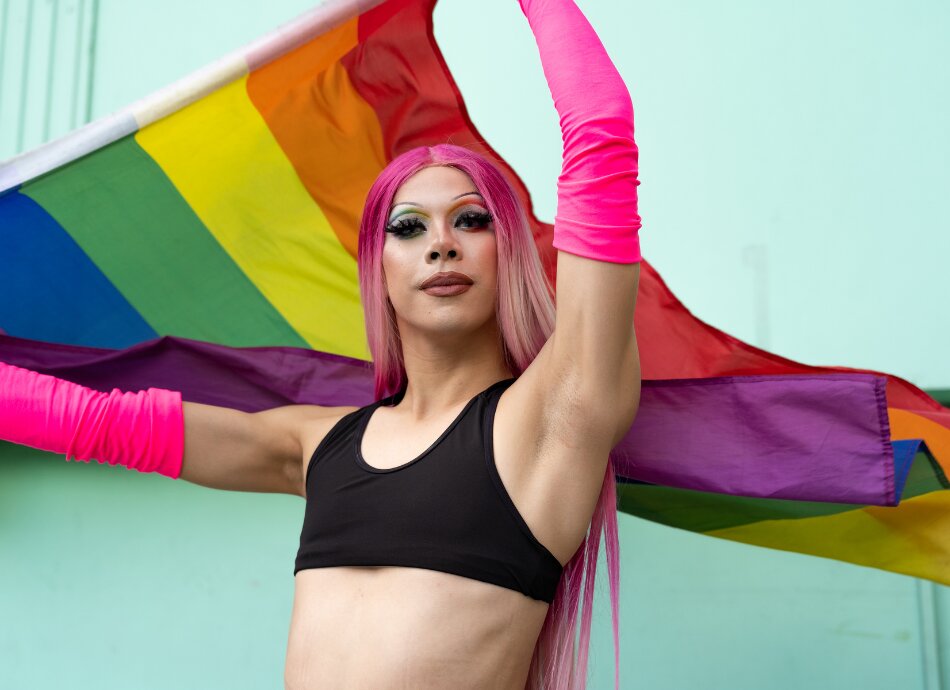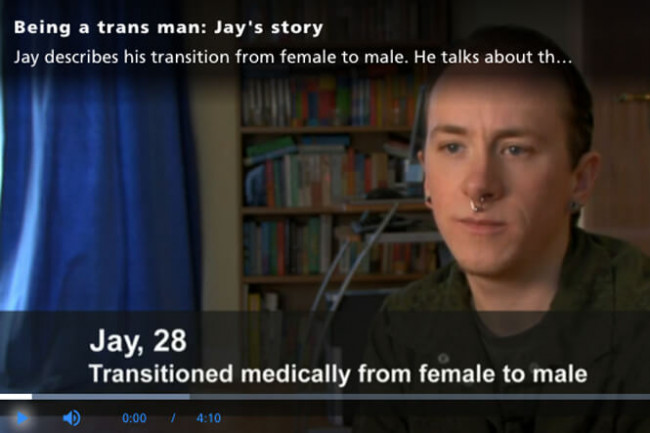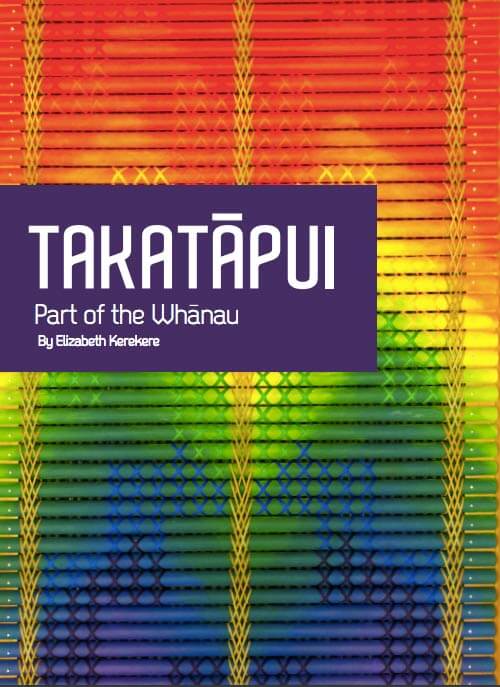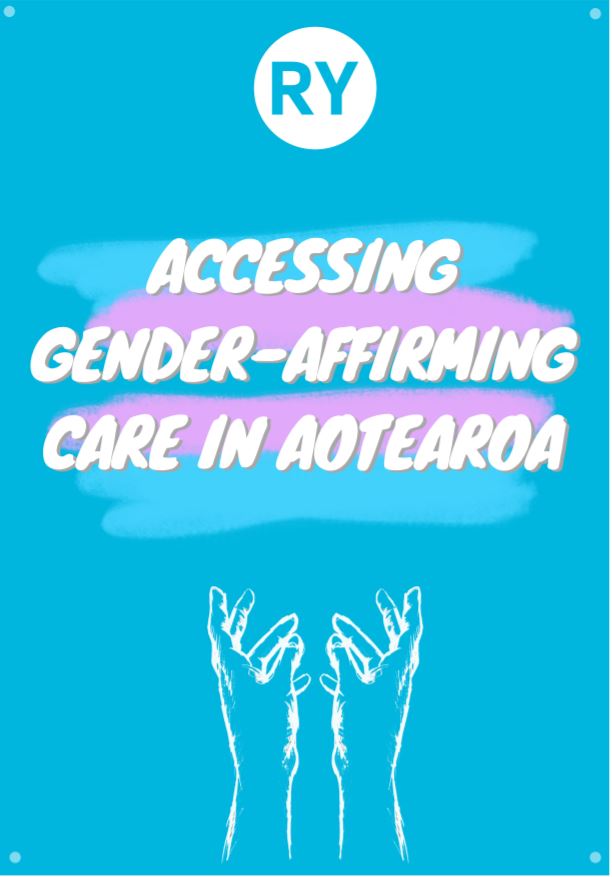Understanding gender diversity
Key points about gender diversity
- When you are born, you are assigned a sex – male, female or indeterminate – depending on the appearance of your external genitalia.
- You may feel that the sex you were assigned is correct. This is called being 'cisgender'. You may feel that the sex you were assigned is incorrect. This is called being 'transgender'.
- Gender diversity is a term used to cover the range of possible gender identities, such as female, male, transgender, intersex, non-binary and takatāapui.
- Sexual orientation is different to gender. It refers to who you are attracted to.
- If you or your child is unsure about gender identity there is support available.

Video: Gender Identity - The REAL Sex Talk
This video may take a few moments to load.
(Villainesse, NZ, 2018)
- Gender identity refers to an innate sense of who you are. This may be the same as or different from the sex that was assigned to you at birth. How you choose to express your gender identity varies from person to person.
- Gender dysphoria is a term used to describe uncomfortable or distressing feelings that some people experience because the sex they were assigned at birth does not match their gender. Read more about gender dysphoria.
- If you are transgender, or experience gender dysphoria, you may want to take steps to be recognised as your gender, rather than the sex you were assigned at birth. These steps may include changing your name, wearing clothes that affirm your gender, taking hormones or having surgeries.
- Sexual orientation is different to gender. It refers to who you are attracted to and may be described as heterosexual/straight, lesbian, gay, bisexual, pansexual, asexual, takatāpui or using other terms.
- Gender diversity is a term to cover the range of possible gender identities, such as female, male, transgender, intersex, non-binary and takatāpui.
- If you are unsure about your gender, or your child is unsure about theirs, there is support available to help you.
When you are born, you are assigned a sex – male, female, or indeterminate – depending on the appearance of your external genitalia. You may feel that the sex you were assigned is correct. This is called being 'cisgender'. You may feel that the sex you were assigned is incorrect. This is called being 'transgender'.
A transgender person may identify as a binary gender such as a transgender woman (who was assigned 'male' at birth) or a transgender man (who was assigned 'female' at birth). Or a transgender person may identify as a non-binary gender – this includes any gender that is not male or female.
'Intersex' is an umbrella term that refers to people born with one or more of a range of variations in sex characteristics that fall outside of traditional conceptions of male or female bodies. For example, intersex people may have variations in their chromosomes, genitals or internal organs like testes or ovaries. If a person has an intersex condition, they may be cisgender (agreeing with the sex they were assigned at birth) or transgender (not agreeing with the sex they were assigned at birth), or they may simply identify both their sex and gender as intersex. It is important to not make assumptions about this, but instead to let people define their own experiences.
Gender diversity refers to a diversity of genders in addition to cisgender people.
Some people think of gender as a spectrum that includes female and male at either end and other genders in between. However, other people may think of male and female as two letters in an alphabet of other genders. Defining non-binary genders is like defining all the other letters of the alphabet, in every language. Genders are so many and varied across different cultures and throughout history.
Some people have a consistent gender throughout their life, and for other people their gender changes. Some of the words that people might use to define or describe their gender, include aikāne, akava’ine, fa’afafine, faa’atama, fakafifine, fakaleiti, genderqueer, intersex, māhū, non-binary, palopa, takatāpui, tangata ira tāne, trans, transgender, transsexual, and whakawahine.
Video: Takatāpui – part of the whānau
Takatāpui is a traditional Māori term meaning ‘intimate companion of the same sex’. It has been reclaimed to embrace all Māori who identify with diverse genders and sexualities, such as whakawahine, tangata ira tane, lesbian, gay, bisexual, trans, intersex and queer.
This video is part of a resource for takatāpui, their whānau and communities, sharing stories and information about identity, wellbeing and suicide prevention. This video may take a few moments to load.
(Gender Minorities Aotearoa and Mental Health Foundation, NZ, 2015)
As a population or demographic, trans people experience significantly higher rates of mental health issues compared with the general population, such as depression and suicidality.
Research shows that the disparity in mental health outcomes is a result of experiencing elevated levels of minority stress, due to discrimination in education, housing, healthcare, employment, access to goods and services, participation in public social life and input into policy and legislative decisions which affect their lives. These factors also create significant barriers to healthcare in general.
Video: Jazz Jennings Reads "I Am Jazz"
This video may take a few moments to load.
(Human Rights Campaign, US, 2017)
Talking about gender diversity(external link) A series of videos from Listening to Families around gender diversity.
Includes:
- Gender diversity – Doing the right thing(external link)
- Gender diversity - It's not all bad(external link)
- Gender diversity – Should we just wait(external link)
- Gender diversity – Talking to schools and groups(external link)
- Gender diversity – Support for parents(external link)
- Gender diversity – When to talk to your GP(external link)
- Gender diversity – Puberty blockers(external link)
- Gender diversity – Readiness assessments(external link)
- Gender diversity – Is this getting more common?(external link)
- Gender diversity – Gender across the Pacific(external link)
- Gender diversity – Questioning your gender(external link)
- Gender diversity – key message – Love and listen.(external link)
It depends on your relationship to them. For example, an employer has legal obligations to provide a safe workplace, a clinician has a legal obligation to provide safe and appropriate healthcare, and for whānau, support is more about accepting, respecting, learning and caring. If this is the beginning of your journey to support transgender people, there are many resources available to assist you in learning.
The first step in any case, is to use the name and pronoun (eg, she/her, he/him, they/them) that the transgender person is comfortable with, and to respect their privacy by not telling others unless they give consent. Find out more about use of personal pronouns. A printable card(external link) is available to help transgender people with communicating preferred names and pronouns. These could be made available in workplaces and health centres.
Video: What It's Like To Be Intersex
This video may take a few moments to load.
(Intersex Awareness, NZ, 2018)
Video: Selena Pirika - Te Ao Takatāpui
Te Ao Takatāpui is a documentary video series celebrating and sharing the stories of takatāpui community members. The following three videos are from this series. This video may take a few moments to load.
(InsideOUT, NZ, 2021)
Video: Carym Wharerau - Te Ao Takatāpui
This video may take a few moments to load.
(InsideOUT, NZ, 2021)
Video: Alesha Ahdar - Te Ao Takatāpui
This video may take a few moments to load.
(InsideOUT, NZ, 2021)
Video: I am transgender – Charly Walsh's transgender story
This video may take a few moments to load.
 (external link)
(external link)
(TVNZ, NZ, 2019)
Video: Being a trans man – Jay's story
Jay describes his transition from female to male. Click on the image to go to the NHS Choices website, then scroll down and click play on the video. It may take a few moments to load.
 (external link)
(external link)
(NHS Choices, UK, 2018)
The discrimination and marginalisation experienced by trans people often extends to their partners as well. While the transitioning process presents challenges to the people going through the change, their partners have challenges of their own to face. Research in Aotearoa New Zealand found that partners of transgender people often feel unsupported and talked about ways in which whānau and friends could support them better through listening, learning, being respectful and using preferred pronouns.
Gender Minorities Aotearoa(external link) Gender Minorities Aotearoa is a cross-cultural, transgender-led organisation that operates on a kaupapa Māori public health framework. Its activities include research, providing information and resources, advocacy, education and training, operating services for gender minorities and providing support for takataapui, transgender and intersex people, and referrals to other services. They keep an up-to-date list of community support organisations.(external link)
NZ Parents and Guardians of Transgender and Gender Diverse Children (NZPOTC)(external link) is a parent-led group where you can find the information, guidance, advice and companionship to help you and your family/whānau safely and happily navigate your journey, knowing you are never alone.
For more national and local support groups, see gender diversity support organisations.
The following includes some common terms relevant to gender diversity. For a fuller list of terms, see Gender Minorities Aotearoa’s Glossary of gender-related terms and how to use them(external link).
Cis, cisgender and cissexual
This prefix or adjective means ‘not trans’. Cisgender people identify more or less with the gender assigned to them at birth. In discussions regarding trans issues, one would differentiate between women who are trans and women who aren’t by saying “trans women and cis women”. Cis is not an insult, but a neutral descriptor – much like heterosexual is to homosexual.
Gender or gender identity
One’s actual, internal sense of being male or female, neither of these, both of these, etc. Everyone has a gender. In some circles, gender identity is falling out of favour, as one does not simply identify as a gender, but is that gender.
Gender diversity
A phrase that acknowledges a range of genders/gender identities that includes male and female and many other gender identities.
Gender dysphoria
This is a clinical term referring to dissonance between one’s assigned gender and/or one’s body, and one’s personal sense of self. Prior to the American Psychiatric Association’s Diagnostic and Statistical Manual of Mental Disorders (DSM–5), the term “gender identity disorder” was used, but that was removed as it often led to gender variance being stigmatised and misdiagnosed as a pathological condition.
Gender minorities
This term recognises that among the diversity of genders, there is a category of people who are seen as different to the social majority (ie, not female or male) and are discriminated against on that basis.
Intersex
This term describes a person whose birth physical sex characteristics (eg, anatomy, chromosomes) are ambiguous in the context of the male/female sex binary. A person may not know they have intersex anatomy until they reach puberty and their body changes differently than expected or until they find themselves infertile as an adult.
Mx
Mx is often used as an honorific by nonbinary people, as well as those who do not wish to reveal or be referred to by their gender, in place of Mr, Ms, Mrs or Miss. This is usually pronounced ‘miks’.
Non-binary
Non-binary is the preferred umbrella term for all genders other than female/male or woman/man. It used as an adjective (eg, Elsa is a binary trans woman and Jesse is non-binary).
Takatāpui
Takatāpui refers to Māori who are not heterosexual and/or not cisgender. It is used both as a gender identity (similar to transgender), as an attraction or sexual orientation (similar to lesbian, gay, bi or pansexual). It is also used as an umbrella term for all non-heterosexual and/or non-cisgender Māori people, (similar to the term ‘rainbow community’).
They
A person whose gender is non-binary may prefer to use the pronoun ‘they’ instead of ‘he’ or ‘she’. It’s important to respect whatever gender pronouns a person wishes to use.
Trans
Trans is used as an abbreviation of either transgender or transsexual, or as an umbrella in the same way that transgender is used.
Trans man
Trans man refers to a man who was assigned female at birth. He may or may not be identified by others as trans, and may or may not identify himself as trans. It is grammatically and definitionally correct to include a space between trans and man.
Trans woman
Trans woman refers to a woman who was assigned male at birth. She may or may not be identified by others as trans, and may or may not identify herself as trans. It is grammatically and definitionally correct to include a space between trans and woman.
Transgender
An umbrella term for people whose gender identity and/or gender expression differs from what is culturally typically associated with the gender/sex they were assigned at birth. People under the transgender umbrella may describe themselves using one or more of a wide variety of terms or may simply use the term transgender.
Transition
This refers to transitioning from being seen as one’s birth-assigned gender to one’s actual gender. Transition generally initially includes social elements such as changing one’s clothes, hair, name (socially and maybe legally), changing the gender marker on one’s legal documents, binding breasts or wearing breast forms, etc, and may also include medical treatments such as laser hair removal, hormone replacement therapy or various surgeries. There is no wrong or right way to transition, and everyone transitions at their own pace.
Transsexual
An older term that originated in the medical and psychological communities. It is still preferred by some people who have changed or seek to change their bodies – this can involve gender affirming hormone therapy (GAHT), genital reconstruction surgery (GRS), top surgery (removal of breasts), permanent facial and other hair removal, and/or other medical treatments.
In some circles, the term has started to fall out of favour due to its perceived focus on medical transition. However, those who prefer transsexual often see it as an important distinction due to the definitive experience of incongruity/dissonance/dysphoria with one’s body, which is often the cause of specific medical needs.
Unlike transgender, transsexual is not an umbrella term. Many transgender people do not identify as transsexual and many transsexual people do not identify as transgender. It is best to ask which term an individual prefers. If preferred, use as an adjective, eg, transsexual woman or transsexual man.
Te reo Māori terms
Tāhine or ira tāhūrua-kore Mixed gender, non-binary, or transgender not-otherwise-specified. Outside of the binary.
Whakawahine Trans woman, or to become a woman.
Tangata ira wahine Trans woman, or with the spirit or gender of woman.
Whakatāne Trans man, or to become a man.
Tangata ira tāne Trans man, or with the spirit or gender of man.
Whakaputa ā-ira Gender expression.
Whakamana ira Gender affirming, or to have pride in ones gender.
Tuakiri ā-ira Gender identity.
Tīrengi ā-ira Gender dysphoria or anxiety.
Tikanga ā-ira whānui Gender norms.
Rerekētanga āhuatanga ā-ira Variations of sex characteristics.
Irawhiti Transgender, or gender that changes, transfers, or crosses over.
Irapūmau Cisgender, or permanent fixed gender.
Irakore Agender, or no gender.
Irakē GenderQueer, or different gender.
Irahuhua Gender diverse.
Huri ā-ira Gender fluidity.
Irahuri Gender fluid, or to turn, change, or move gender. Sometimes this can also mean transgender.
Mae irawhiti or mae irahuri Anti-trans, or transphobia.
The following links provide further information about gender diversity. Be aware that websites from other countries may have information that differs from New Zealand recommendations.
Gender identity(external link) Common Ground, NZ
Let's talk – a resource guide for parents(external link) Outline, NZ
Breaking through the binary – gender explained using continuums(external link) itspronouncedmetrosexual.com
Find information and services(external link) Gender Minorities Aotearoa
Healthcare for transgender New Zealanders(external link) Health New Zealand | Te Whatu Ora
Hormone replacement therapy(external link) Transgender NZ Issue 1, Gender Minorities Aotearoa
Oliphant J, Veale J, Macdonald J, Carroll R, Johnson R, Harte M, Stephenson C, Bullock J.
Counting ourselves community report(external link) Counting Ourselves, NZ
Trans and non-binary inclusive workplaces – a guide for employers and employees(external link) Outline, NZ
Trans 101 – glossary of trans words and how to use them(external link) Gender Minorities Aotearoa
Resources
Resources from other organisations that give you more information on gender diversity. Note: Some resources are from overseas so some details may be different in New Zealand, eg, phone 111 for emergencies or, if it’s not an emergency, freephone Healthline 0800 611 116.
Pronouns in the workplace(external link) Diversity Works NZ
Takatāpui – part of the whānau(external link) Tīwhanawhana Trust and Mental Health Foundation, NZ
Families in transition – a resource guide for families of transgender youth(external link) Central Toronto Youth Services, Canada
Glossary of gender related terms and how to use them (external link)Gender Minorities Aotearoa, NZ
To be who I am(external link) Human Rights Commission, NZ
Handbook for parents – consortium on the management of disorders of sex development(external link) Intersex Society of North America
Making schools safer for trans and gender diverse youth(external link) Inside Out, NZ
Youth’12 – fact sheet about transgender young people(external link) Gender Minorities Aotearoa
First steps – shared stories from parents and caregivers of trans* and gender diverse children(external link) Working It Out, Australia
Information and support directory - Intersex/Trans/Non-binary/Takatāpui/MVPFAFF [PDF, 69 KB] re.frame, NZ,
The genderbread person(external link) itspronouncedmetrosexual.com
Transgender people and suicide(external link) Centre for Suicide Prevention, Canada
Safe transition(external link) Willis St Physiotherapy, NZ
References
- Trans 101 – glossary of trans words and how to use them(external link) Gender Minorities Aotearoa, NZ, 2020
Guidelines for gender affirming healthcare for gender diverse and transgender children, young people and adults in Aotearoa NZ(external link) Transgender Health Research Lab, University of Waikato, NZ
Qtopia(external link) Funded national training initiative for primary care to build confidence in how we support our trans and non-binary patients, NZ
Brochures

Central Toronto Youth Services, Canada

Tīwhanawhana Trust and Mental Health Foundation, NZ, 2021

RainbowYOUTH, NZ, 2019
Credits: Healthify editorial team. Healthify is brought to you by Health Navigator Charitable Trust.
Reviewed by: Sex and Gender Diverse Health and Outcomes Working Group, Capital and Coast DHB
Last reviewed:
Page last updated:





